04/04/2023
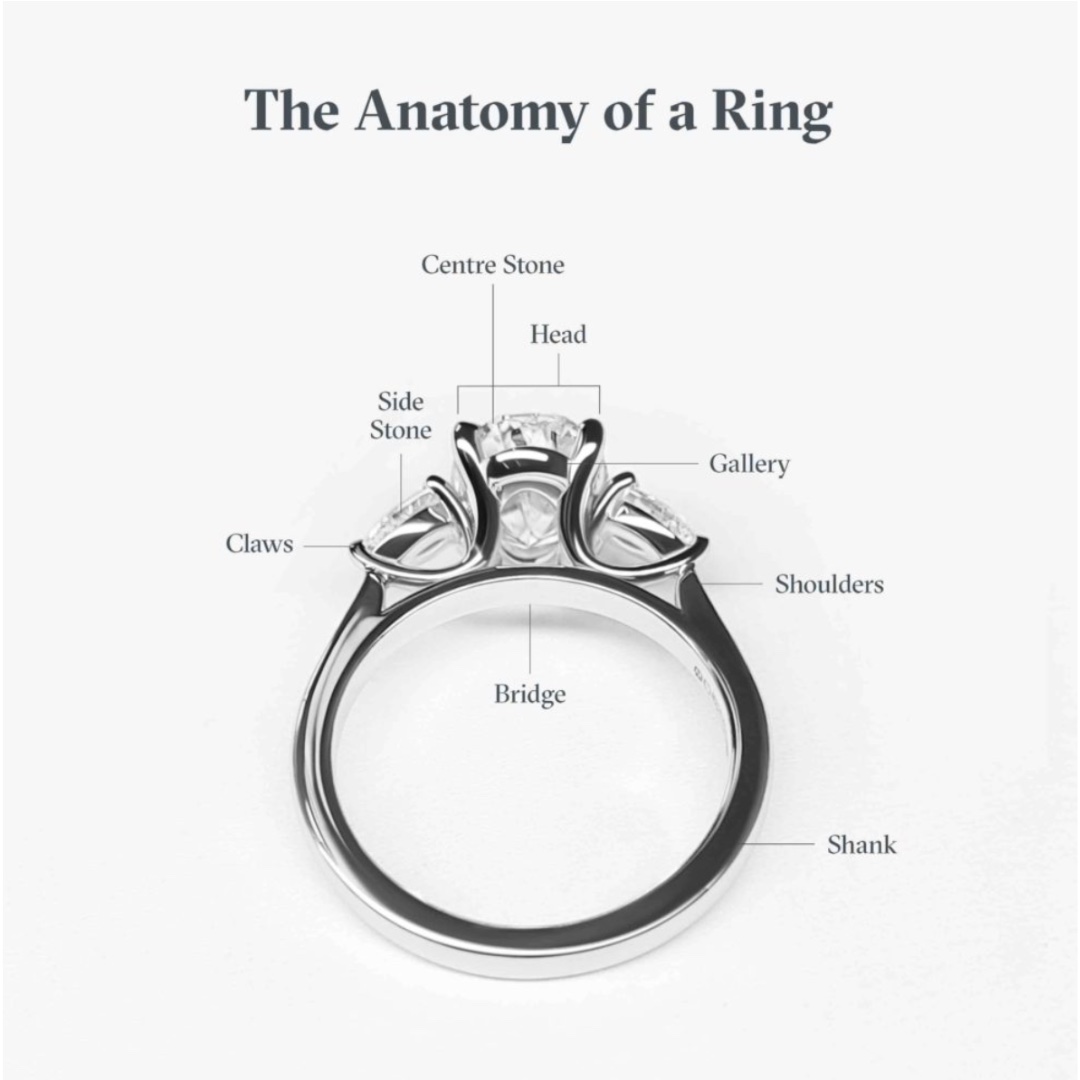
Whether you’re creating custom jewellery or want to know what makes a collection design unique, having the right words to describe the parts of an engagement ring always makes the process easier. Being able to talk about the different components of a ring will help you work alongside a designer to ensure each element of your design tells a story. To make your design journey as rich as possible, we explain the different parts of a ring and what they each do.
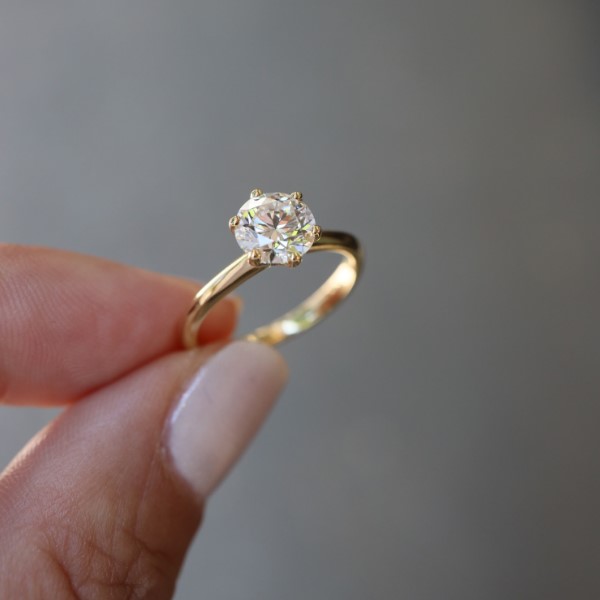
The head of the ring encompasses all the design elements that hold a gemstone in place. This includes the collet, which is the circular rim into which the centre diamond is set, and basket/claws, which wrap around the centre diamond and secure it in place.
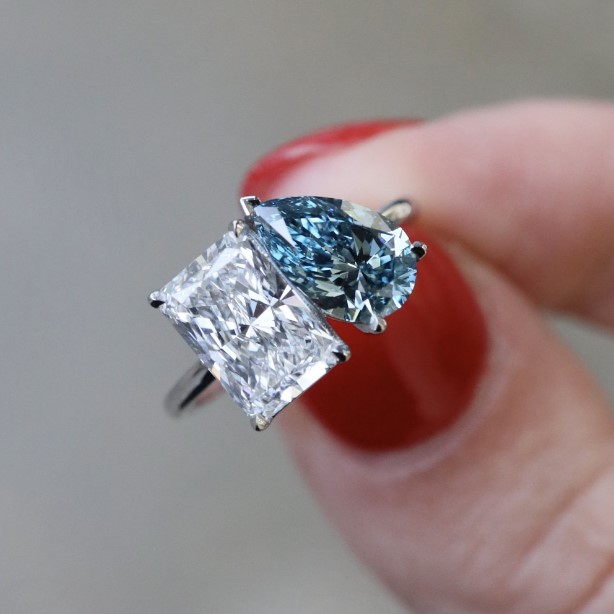
The centre diamond on an engagement ring typically ranges from 0.3 to 10+ carats. Coloured gemstones are also a great choice for an engagement ring because they bring something unique to even the most traditional design. Popular gemstone choices include coloured diamonds, sapphires, rubies, emeralds, and aquamarines.
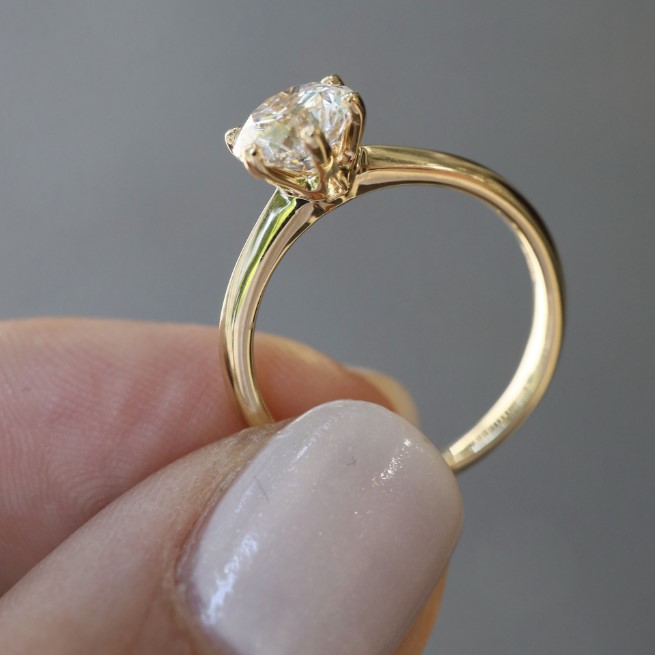
The claws (prongs in the US) of the ring are the small metal fixings that grip the gemstones and hold them in place. The two most common claw types are round claws and eagle claws (alternatively referred to as ‘round prongs’ and ‘claw prongs’ respectively). Claws come in single or double settings and most diamond shapes can be set with either four or six claws. Other claw or prong types are square claws, petal claws, V-shaped claws, and bar claws. Some people prefer more or larger claws because they create a highly secure setting, while some opt for daintier claws as they let more light into the gemstone, giving it a greater sparkle.
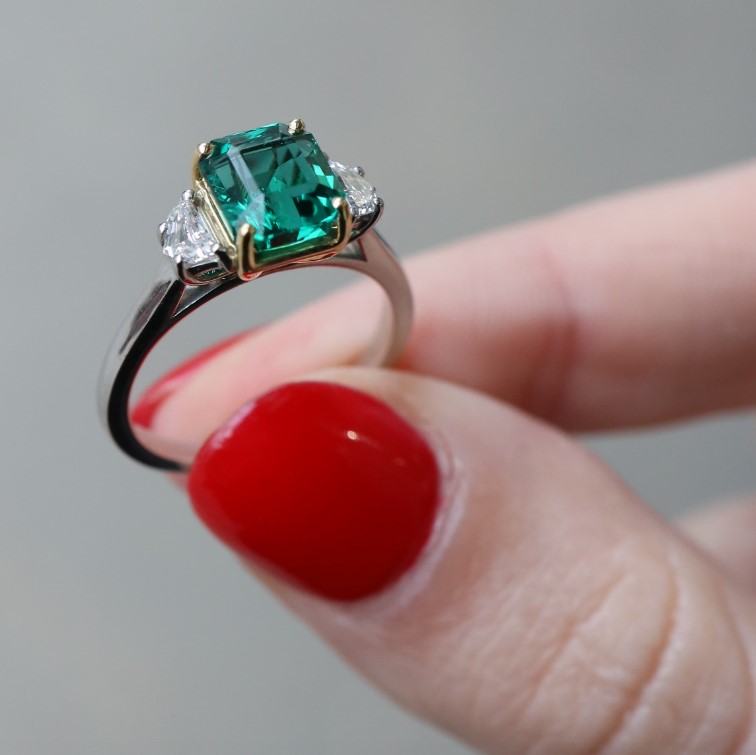
The side or accent stones, are arranged around the centre stone, and can match or contrast the centre stone in colour, shape, or style. Trilogy engagement rings feature two prominent accent stones on either side of the centre stone. This style is beloved for its symbolism, as the three stones are meant to represent the past, present, and future of a lifelong relationship. More intricate designs might feature clusters of side stones, marquise diamond petals, or up to 50 smaller side stones that complement the centre stone.
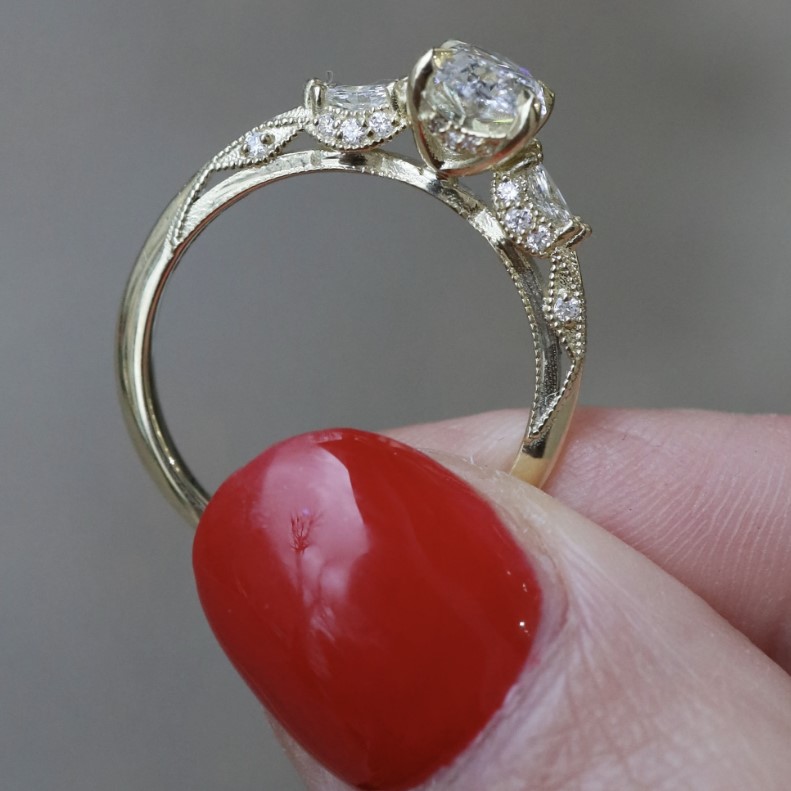
On an engagement ring the gallery is the part of the mount visible from the side of the ring. A gallery can be sleek and minimal or feature intricate shapes and filigree. A ‘hidden halo’ can be added to the gallery by setting diamonds around the ring’s bezel (a thin bar that runs around the base of a gemstone).
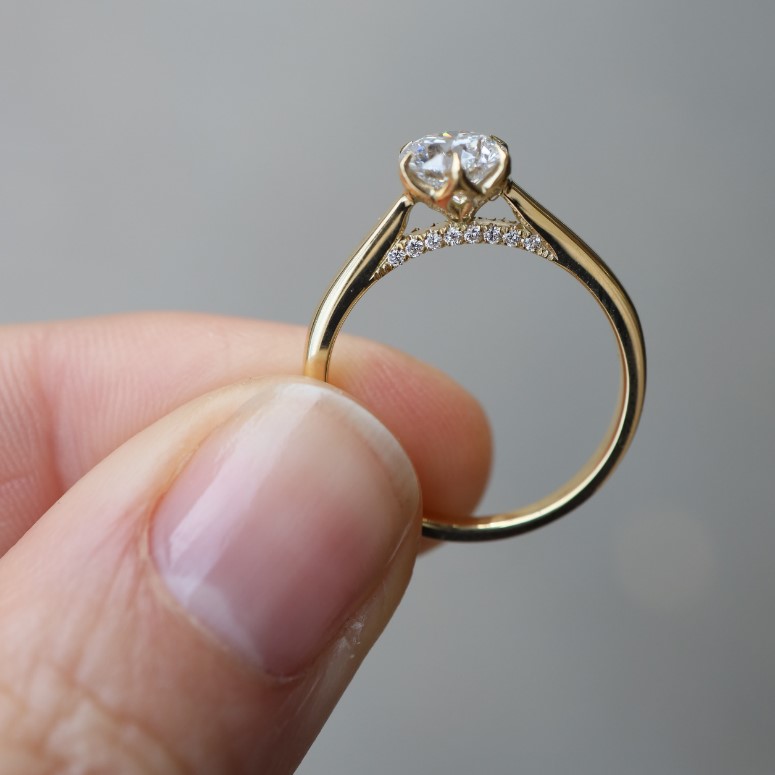
The bridge is the section of metal that runs underneath the centre stone or gallery. The bridge can be a great place to include a personalised detail, like a small coloured gemstone.
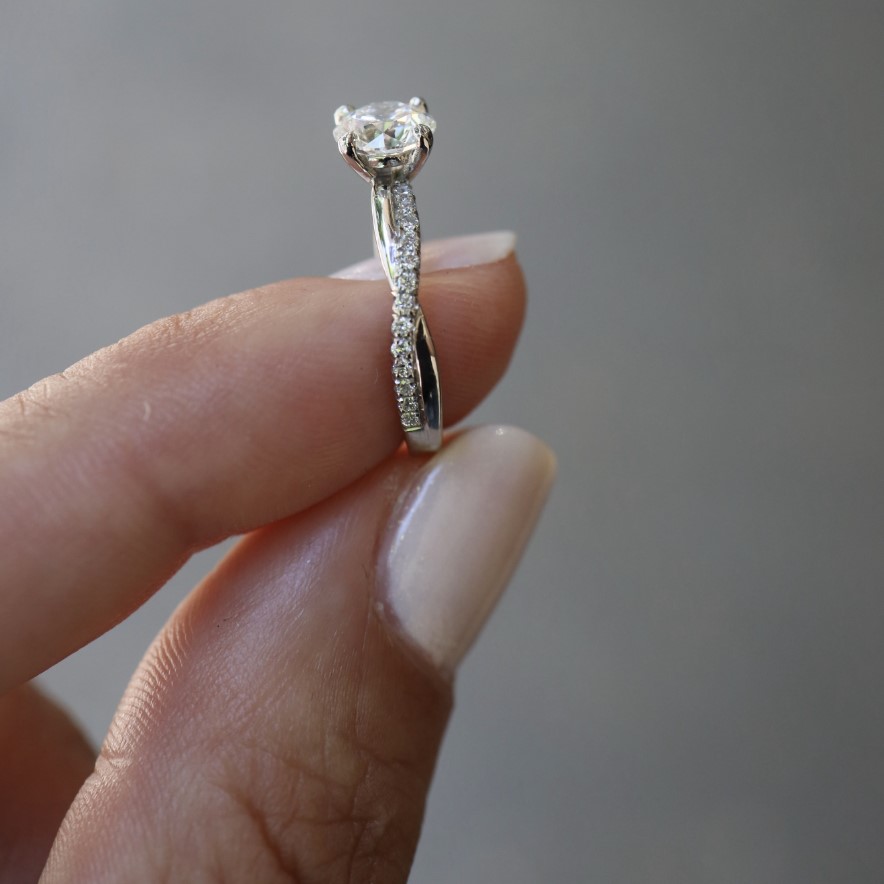
The band (or "shank" in the US) is the portion of the ring that wraps around the finger. This is one of the most customisable pieces of any ring, so don’t hold back your creativity. Engravings, twists, milgrain, filigree, pavé, coloured gemstones—the width and profile of your band are up to you, so pick something that feels representative of your relationship.